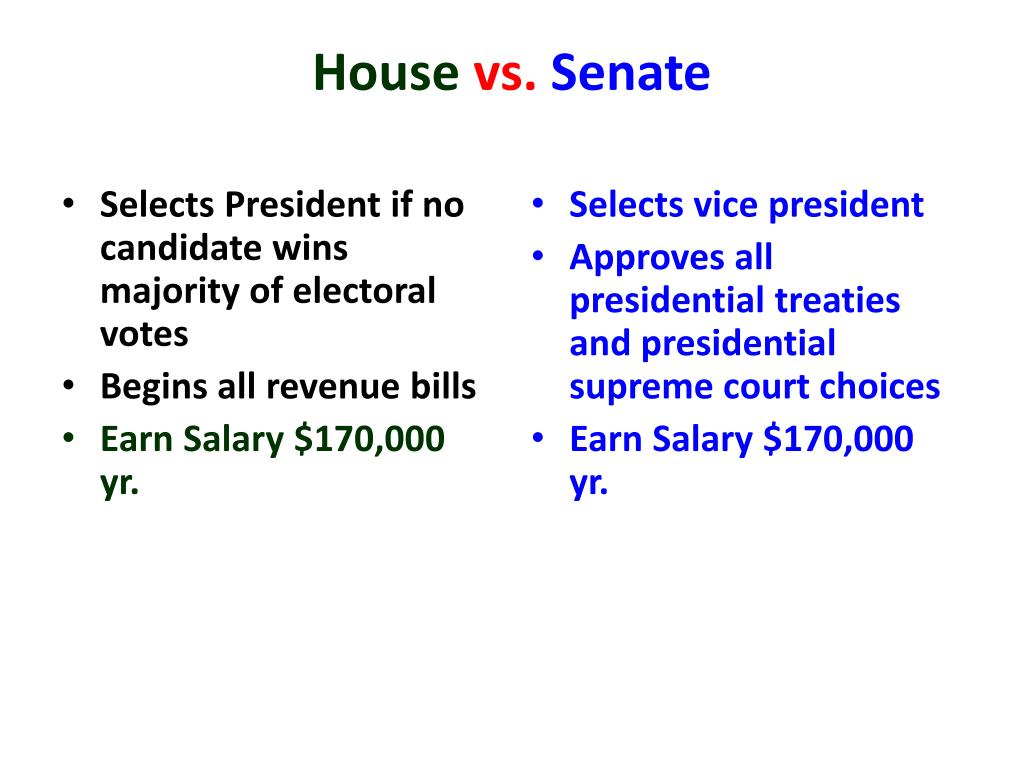Table Of Content

However, most bills originate in the offices of one or more of their legislative sponsors. Marshall’s decision expanded the scope of the legislative powers enumerated in the Constitution by including the power to declare war, levy taxes, and regulate commerce. These powers are derived from the Constitution’s necessary and proper clause in Article I, Section 8. The Constitution requires that senators be at least 30 years old, U.S. citizens for at least nine years, and residents of the states they’ll represent. Senate terms are for six years; the terms are staggered so that approximately a third of all senate seats are up for election every two years. This is intended to protect the Senate from short-term political pressure and to ensure that turnover in the Senate occurs evenly, rather than having stasis for six years followed by upheaval.
Women in Congress
If Congress adjourns before 10 days are up and the President takes no action, then the bill dies and Congress may not vote to override. This is called a pocket veto, and if Congress still wants to pass the legislation, they must begin the entire process anew. The House has several powers assigned exclusively to it, including the power to initiate revenue bills, impeach federal officials, and elect the President in the case of an Electoral College tie. As outlined in the Constitution, the House represents citizens based on district populations, while the Senate represents citizens on an equal state basis. This agreement was part of what is called The Great Compromise which, in turn, led to the Permanent Seat of Government Act establishing the nation’s federal capital in Washington, DC.

Majority party powers and prerogatives
The president has 10 days to sign or veto bills that Congress sends to the White House for approval. (A presidential veto prevents the legislation from taking effect.) If the president approves the bill, it’s signed into law. If the president rejects the bill, it’s returned to Congress with an explanation for the veto. In the early Supreme Court case McCulloch v. Maryland, Chief Justice John Marshall wrote that the government is “one of enumerated powers,” which means that it can exercise only the powers that have been granted to it explicitly by the Constitution.
History
In the House of Representatives, or House, the number of elected officials from each state is based on its population. Since 1911, the total membership of the House has been fixed at 435, with a minimum of one member from each state. As of 2012, the most populous state, California, had 53 officials in the House of Representatives. The senators or the members of the Senate are highly qualified and experienced people in their respective domains. One of the major functions of the Senate is its power to try impeachments and removals of the representatives of the House.
Article I of the U.S. Constitution: Difference Between House and Senate
Constitution which would automatically prevent a convicted felon from running for public office. Individual states can make their own laws concerning qualifications, but they cannot add restrictions concerning a candidate's legal history. A significant difference between the Senate and the House of Representatives is how long their members serve after being elected.
These 112 House Republicans voted against Ukraine aid
Senators must be 30 years of age, U.S. citizens for at least nine years, and residents of the state they represent. The majority party members and the minority party members meet in separate caucuses to select their leader. Third parties rarely have had enough members to elect their own leadership, and independents will generally join one of the larger party organizations to receive committee assignments. Gerrymandering is used at the state legislature level to create districts that overwhelmingly favor one party. Another Republican state representative, Jacqueline Parker, decried the GOP votes for repeal, calling abortion "akin to slavery."
US Senate to vote on Ukraine aid package after House's months-long delay - FRANCE 24 English
US Senate to vote on Ukraine aid package after House's months-long delay.
Posted: Tue, 23 Apr 2024 02:02:05 GMT [source]
More House History
It was created as an independent non-partisan agency by the Congressional Budget and Impoundment Control Act of 1974. It helps Congress estimate revenue inflows from taxes and helps the budgeting process. It makes projections about such matters as the national debt[131] as well as likely costs of legislation. It prepares an annual Economic and Budget Outlook with a mid-year update and writes An Analysis of the President's Budgetary Proposals for the Senate's Appropriations Committee. The speaker of the House and the Senate's president pro tempore jointly appoint the CBO director for a four-year term.
The Reapportionment Act of 1929 established that there be 435 representatives, and the Uniform Congressional Redistricting Act requires that they be elected from single-member constituencies or districts. It is also required that the congressional districts be apportioned among states by population every ten years using the U.S. census results, provided that each state has at least one congressional representative. Each senator is elected at-large in their state for a six-year term, with terms staggered, so every two years approximately one-third of the Senate is up for election. Each state, regardless of population or size, has two senators, so currently, there are 100 senators for the 50 states.
What's a Select Committee?
Only House conferees show for Medicaid expansion conference committee; Senate says negotiations still happening - WLBT
Only House conferees show for Medicaid expansion conference committee; Senate says negotiations still happening.
Posted: Fri, 26 Apr 2024 00:41:00 GMT [source]
They vote on bills, speak with constituents and other groups, and review constituent mail, press clips and various reports. Work can continue into the evening with receptions or fundraising events. The bicameral legislature that splits legislative duties between a large House of Representatives and a smaller Senate is a key component of the framers’ power-sharing strategy. Congress has the power to override a presidential veto by a two-thirds majority vote of both the House and Senate.
Paired with this doctrine is the ruling that legislative powers may not be delegated to any other branch of government. Article I, Section 3 of the Constitution calls for two senators from each state to be selected by a state’s legislature to represent that state. However, the 17th Amendment, approved in 1913, mandates the direct election of U.S. senators, which means that they’re elected by direct vote of the people rather than by state legislators.
The result is an unpredictable daily floor schedule for Senate business and the possibility that bills will be proposed whose subjects haven’t been researched or debated in committee. To bring some order to Senate proceedings, the majority leader is given priority in being recognized to speak and to propose the bills and legislation that the body will consider. The Senate website explains that the framers modeled the upper chamber of Congress after early state senates and the governor’s councils of the Colonial era. To shield senators from short-term political pressure, their terms were set at six years rather than the two-year terms of House representatives. Article I, Section 3 of the Constitution describes the basic composition, operation, and duties of the Senate, although the Constitution grants the Senate leeway in determining how it will conduct its business. The Senate website describes the powers and procedures of the legislative body, which include trying impeachments, reviewing and approving presidential nominees, approving treaties, and managing internal matters.
If approved, the Senate then serves as the investigative/judicial body to determine if the charges merit removing the accused official from his or her office. However, the vote in the Senate has to represent "a significant majority," usually taken to mean 67 of the 100 votes. If released by the committee, the bill is put on a calendar to be voted on, debated or amended. If the bill passes by simple majority (218 of 435), the bill moves to the Senate. In the Senate, the bill is assigned to another committee and, if released, debated and voted on. Finally, a conference committee made of House and Senate members works out any differences between the House and Senate versions of the bill.
Before members are assigned to committees, each committee’s size and the proportion of Republicans to Democrats must be decided by the party leaders. The total number of committee slots allotted to each party is approximately the same as the ratio between majority party and minority party members in the full chamber. All the US states have representatives at the House with the most populous states having more representatives than the least populated ones; for example, California has fifty-two representatives while Vermont and Alaska have one representative each. The senator who has the podium can speak for as long as he/she wants which means that the minority can control the Senate.
But leading conservatives like Trump, former Arizona Gov. Doug Ducey and Senate candidate Kari Lake have touted their general support for abortion restrictions but said the 1864 ban goes too far. Many state Republican lawmakers sharply objected on Wednesday to the push to undo the Civil War-era ban that has roiled the politics of the state after the Arizona Supreme Court ruled that it is enforceable. Hamilton said she had several phone conversations with Republicans the night before the vote and while she would not divulge the details of those conversations, she said it made her cautiously optimistic.













